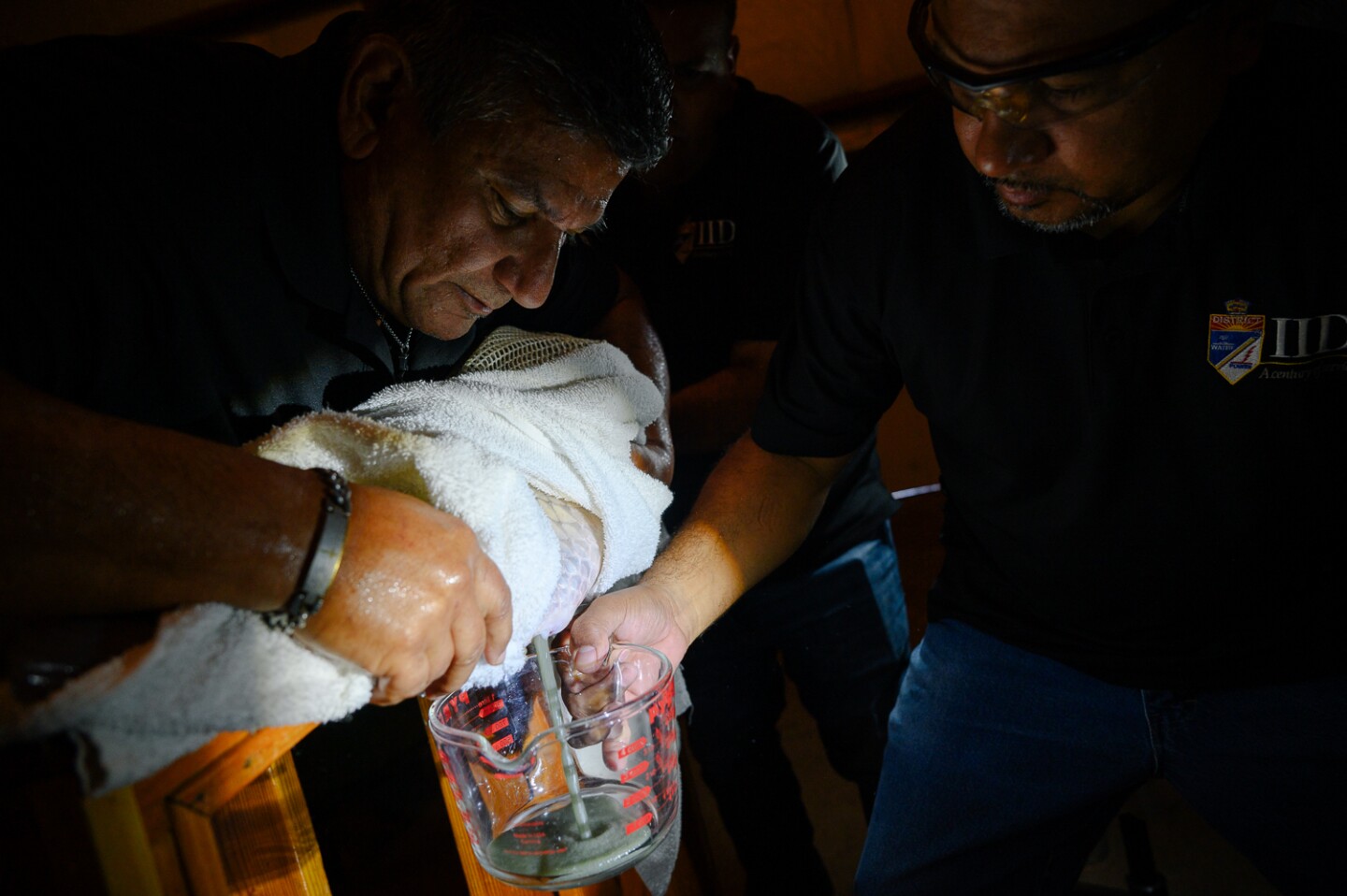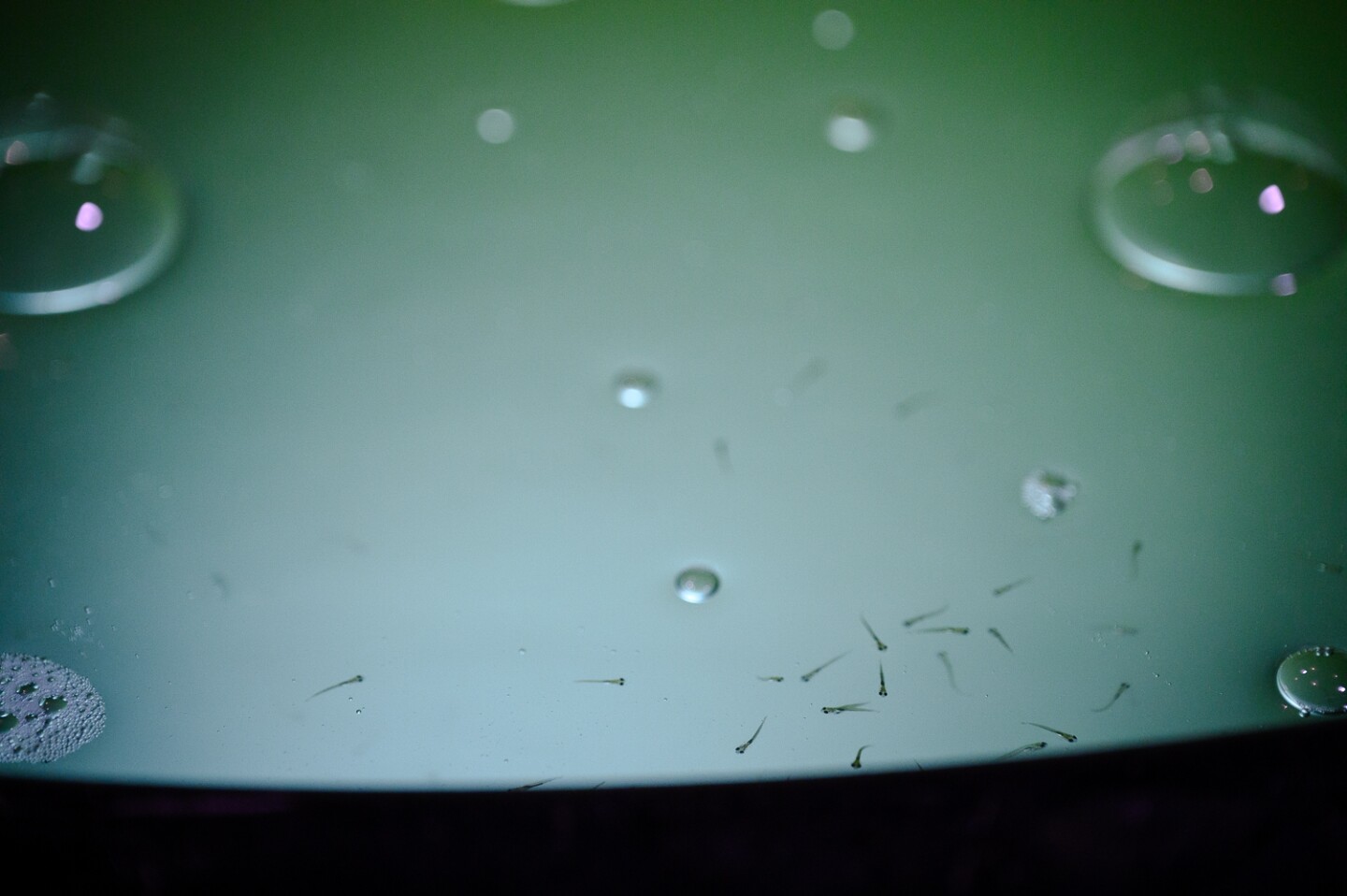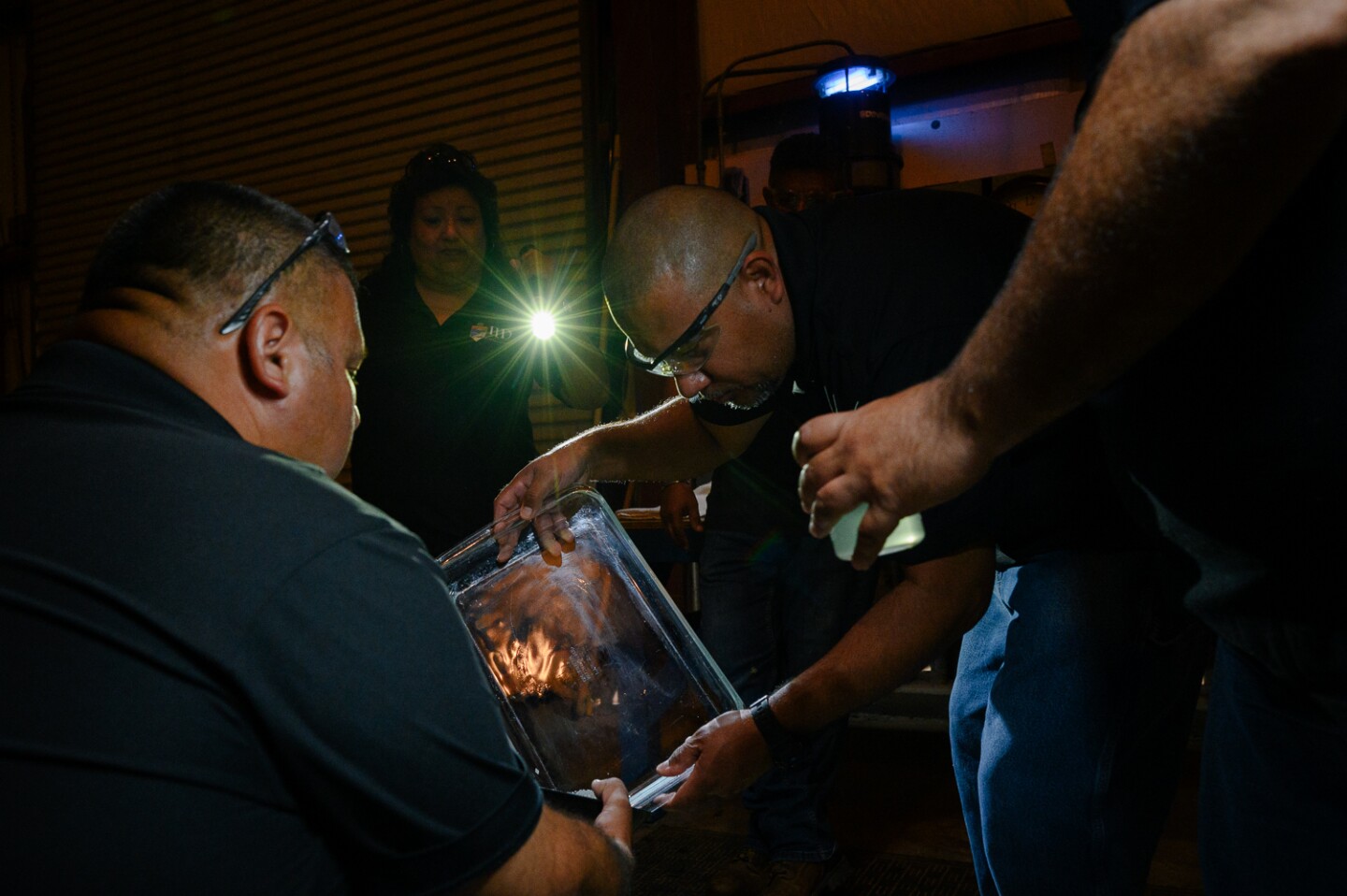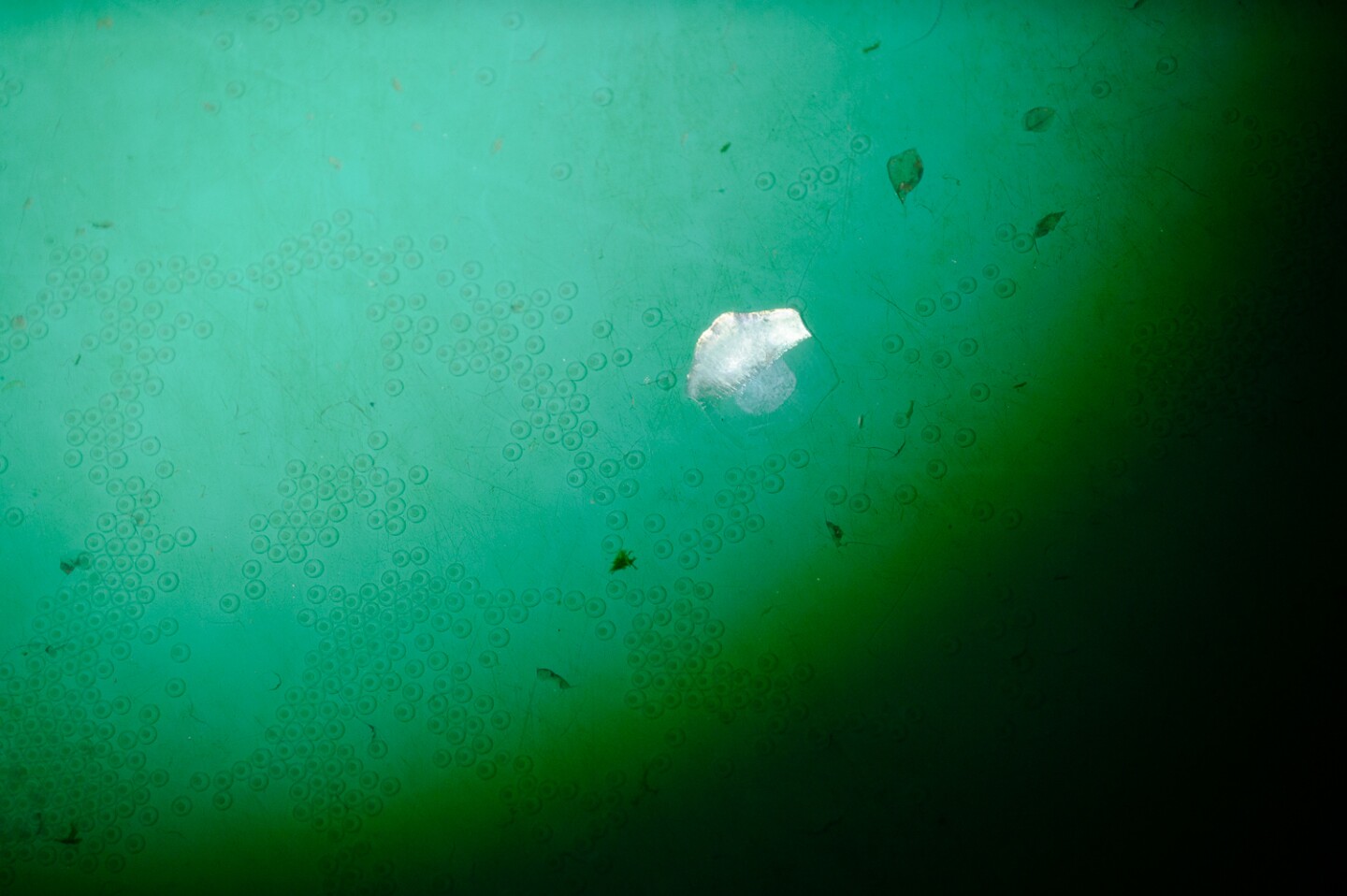As summer approaches, the Imperial Irrigation District is gearing up for another battle with the weeds that infest its canals.
To do that, the regional water agency is calling in reinforcements: a small army of plant-munching fish.
Water weeds are a common problem for many irrigation districts, since shallow canals and clear water create a welcoming environment for aquatic plant life. The weeds regularly clog up the system of gates and channels that ferry water to farms throughout Imperial County.
To fight the spread, the Imperial Irrigation District, or IID, unleashes thousands of grass carp, a river fish native to North Vietnam and other parts of Asia. The stocky carp have a massive appetite for aquatic plants and can eat more than double their body weight in less than a day.
“We put them in the canals, and they basically become IID workers,” said Pablo Cortez, who leads the district’s grass carp hatchery program. “It's very effective.”


Wild grass carp are invasive species considered a public enemy by state authorities. The species can decimate native ecosystems if left unchecked. The California Department of Fish and Wildlife has made it illegal to import them in most cases and issued kill orders in certain counties.
But IID uses its own genetically-altered grass carp, which the district raises at a hatchery in El Centro. Hatchery workers place each batch of carp eggs under immense pressure during the fertilization process, creating young fish that have extra genetic material and are effectively unable to reproduce.
This method of sterilizing grass carp and using them to control aquatic weeds sounds futuristic, but it’s been employed widely in the Southeastern U.S. and other parts of the country. IID has been releasing the fish into its canals since the mid-1980s.
Still, some researchers who study freshwater environments worry that we don’t fully understand the broader impact of the practice. In 2009, aquatic ecologist Eric Dibble co-authored a review of past scientific studies on grass carp.
“The ultimate conclusion was that we need more research,” said Dibble, a retired professor at Mississippi State University. “There was a lot missing.”
Still, Dibble said he’s encouraged by the fact that states like California tightly regulate the use of grass carp.
IID officials said they carefully blood test a certain number of carp from each batch to make sure all of them are sterile before any of the fish leave the hatchery. They also inject each fish with a tiny radio transponder tag that includes a unique identification number.



Imperial County’s canals are also largely closed off from any natural watersheds, making it unlikely that the fish would escape into the wild. The water the district pulls from the Colorado River eventually flows onto farm fields, into water treatment plants or drains into the Salton Sea.
That sterilization process makes the spring spawning season a nerve-wracking time of year. Earlier this week, Cortez and his team prepared to fertilize a new batch of eggs. They moved swiftly, collecting the eggs in Pyrex measuring cups.
Once the eggs were fertilized and mixed with water, the hatchery workers had just four minutes to move them into another cylinder and apply 8,000 pounds of pressure using a mechanical press — all while keeping the eggs in constant motion so they wouldn’t suffocate.
Even once that was done, Cortez said he wouldn’t be able to relax until that evening, when he would finally be able to tell whether the eggs had survived the process.
“We work better under pressure anyway,” he said and chuckled.


The district first turned to grass carp after workers discovered hydrilla spreading throughout the canals in 1981. The resilient and fast-growing plant creates thick snarls of vegetation and has complex root systems that take hold again easily even after being torn apart.
The weeds were taking up so much space in the channels that they were limiting the canals’ capacity and blocking flows from moving as fast. That was a problem for IID, the main water provider in a water-dependent region.
The district tested herbicides against hydrilla and tried using hydraulic excavators and other heavy machinery to scrape the canals.
But those attempts proved futile. The chemicals had little effect against the underwater portions of the plant and could endanger crops once the water reached agricultural land, district officials reported at the time. The different mechanical methods, they said, were expensive and would be difficult to do at a large scale.
In 1985, the district turned to the grass carp as a solution. The fish carved through the hydrilla, eliminating 95% of the weed in just a few years.
Now, IID operates the only licensed grass carp hatchery in California, district officials said. The district facility also ships the fish to other customers in Northern California and Yuma, Arizona.
Arturo Guzman has worked at the hatchery for 20 years and said the job still feels high-stakes at times.
“We can do everything right the whole year and then, if it doesn’t go right during spawning, we potentially lost that whole year,” he said. “So everything has to go perfect.”
“It’s part of life,” Cortez added. “You deal with it as it comes.”





